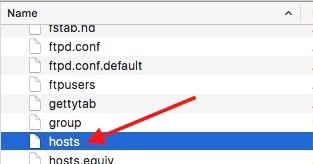

If you’re not having trouble with your Mac, you shouldn’t need to repair permissions. That’s why repairing your Mac’s permissions is one of the first troubleshooting tips you’ll get if you have a problem with your Mac. The repair process shouldn’t cause any problems. Repairing your file permissions is also a safe operation. There are many problems that can be caused by incorrect - or “damaged” - permissions. A program might accidentally give your user account read-only access to your home folder, preventing you from saving or modifying any files. A program might make a program file not-executable, preventing an application from running. For example, a program might incorrectly assign write permissions to system files, reducing security by allowing normal user programs to modify them. It’s possible that these new permissions will then cause problems. The permissions-fixing operation will leave all these other files alone.ĭuring the normal use of your system, it’s possible that programs will change file or folder permissions from their original ones. Your personal data files don’t have any entries in the permissions database, and third-party applications that don’t use .pkg files won’t be represented in the database.

Note that this doesn’t apply to all files on your system.
OS X PERMISSIONS RESET MAC
bom files, your Mac will change the permissions to match those in the. If a file or folder on your system has permissions that don’t match the permissions specified in the. bom files here and checks the actual files on your system. When you repair permissions, your Mac looks at the. bom files here, and the files list which permissions the system files or program files should have.
OS X PERMISSIONS RESET MAC OS X
Mac OS X system files and third-party applications installed from .pkg files leave. The database is stored in “Bill of Materials” files inside the /var/db/receipts and /Library/Receipts folders. Your Mac contains a database of permissions. You can view a file or directory’s permissions by holding Ctrl and clicking the file or directory in the Finder, clicking Get Info, and looking under Sharing & Permissions There are also more modern access control list (ACL) permissions. There are standard UNIX file permissions, the same sort of permissions you’d find on Linux. Macs have two different types of permissions. If you have multiple user accounts on your Mac, permissions keep each user account’s files private from other uses. A program you run on your desktop can’t just modify your system files without permission. The permission system is a way Mac OS X and other operating systems ensure security.


 0 kommentar(er)
0 kommentar(er)
